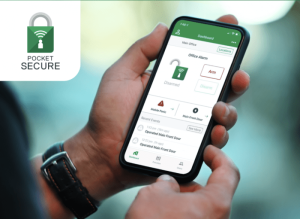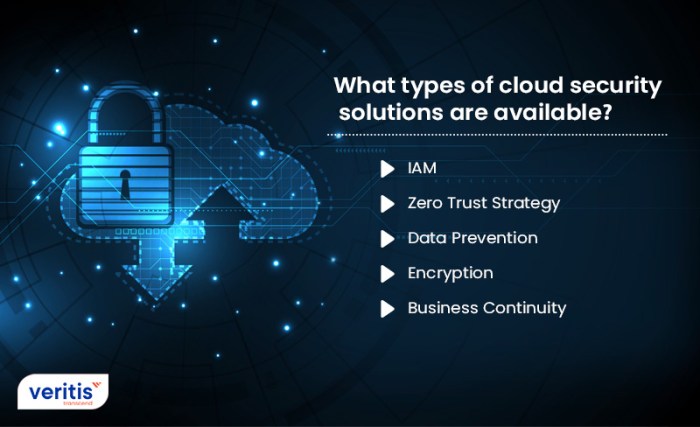
Step into the future of cybersecurity with a detailed exploration of potential security breaches in 2025. From evolving cyber threats to emerging technologies, this captivating overview will keep you on the edge of your seat.
As we delve deeper, you’ll uncover the essential aspects of data privacy concerns, cybersecurity measures, and more, painting a vivid picture of the digital landscape awaiting us in 2025.
Introduction to Security Breaches in 2025

In the context of 2025, a security breach refers to unauthorized access, disclosure, or manipulation of sensitive data or systems, leading to potential harm or disruption. These breaches can occur through various means, such as malware, phishing attacks, or exploitation of software vulnerabilities.Addressing security breaches in 2025 is crucial due to the increasing reliance on digital technologies in all aspects of life, from personal communication to critical infrastructure.
As more devices become interconnected through the Internet of Things (IoT) and cloud computing, the potential attack surface for cybercriminals expands, making it essential to safeguard against potential threats.The evolving nature of cyber threats plays a significant role in contributing to security breaches. Cybercriminals are constantly developing new techniques and tools to exploit vulnerabilities in systems and networks. Factors such as social engineering tactics, ransomware attacks, and sophisticated hacking methods pose a continuous challenge to cybersecurity professionals and organizations worldwide.
The Rise of Ransomware Attacks
Ransomware attacks have become increasingly prevalent in recent years, with cybercriminals demanding payment in exchange for decrypting files or restoring access to systems. These attacks can have severe consequences for businesses, governments, and individuals, leading to data loss, financial losses, and reputational damage.
- Ransomware attackers often target organizations with valuable data or critical infrastructure, seeking to extort money in exchange for returning access.
- Preventative measures such as regular data backups, employee training on phishing awareness, and robust cybersecurity protocols can help mitigate the risk of ransomware attacks.
- Collaboration between law enforcement agencies, cybersecurity firms, and international organizations is crucial in combating the growing threat of ransomware.
Emerging Technologies Impacting Security Breaches
As we look towards 2025, it is essential to consider the impact of emerging technologies on the landscape of security breaches. New advancements bring both opportunities for security enhancement and challenges in safeguarding sensitive information.Advancements in AI and machine learning have the potential to revolutionize cybersecurity measures. These technologies can be utilized to detect and prevent security breaches by analyzing patterns, identifying anomalies, and responding to threats in real-time.
However, the same AI and machine learning algorithms can also be exploited by malicious actors to automate attacks, making them more sophisticated and difficult to detect.
Potential Targets for Security Breaches in 2025
- Quantum Computing: The power of quantum computing can break traditional encryption methods, posing a significant threat to data security.
- 5G Networks: The widespread adoption of 5G technology introduces new vulnerabilities that could be exploited by cybercriminals.
- Blockchain: While known for its security features, blockchain technology is not immune to attacks, especially as it becomes more integrated into various industries.
Role of IoT Devices in Security Breaches
- IoT devices, such as smart home appliances and wearable gadgets, are interconnected and often lack robust security protocols, making them easy targets for hackers.
- The proliferation of IoT devices increases the attack surface for cyber threats, as each connected device represents a potential entry point for unauthorized access.
- Securing IoT devices requires a comprehensive approach that includes encryption, authentication mechanisms, and regular software updates to mitigate the risks associated with these interconnected technologies.
Data Privacy Concerns and Security Breaches
In today’s digital age, data privacy concerns are at an all-time high as security breaches continue to pose a threat to individuals and organizations worldwide. The relationship between data privacy regulations and the occurrence of security breaches is a complex one, with regulations often playing catch-up to evolving cyber threats.
Impact of Data Breaches on Individuals and Organizations
Data breaches not only compromise sensitive information but also result in significant privacy violations for both individuals and organizations. Personal data such as financial information, social security numbers, and health records can be exposed, leading to identity theft, financial loss, and reputational damage. For organizations, data breaches can result in legal consequences, loss of customer trust, and financial repercussions.
- Data breaches can lead to identity theft, where cybercriminals use stolen information to impersonate individuals for fraudulent activities.
- Financial loss can occur when sensitive financial data is compromised, resulting in unauthorized transactions and monetary theft.
- Reputational damage is a common consequence of data breaches, as organizations may lose the trust of their customers and stakeholders due to perceived negligence in protecting data.
Data breaches have far-reaching consequences beyond just financial loss, impacting the trust and reputation of individuals and organizations.
Evolution of Data Privacy Laws to Combat Security Breaches in 2025
As security breaches become more sophisticated, data privacy laws are expected to evolve to better combat these threats in 2025. Stricter regulations and compliance requirements may be put in place to ensure that organizations implement robust cybersecurity measures to protect sensitive data.
- Increased penalties for non-compliance: Data privacy laws may introduce heavier fines and penalties for organizations that fail to adequately protect consumer data.
- Mandatory data breach notifications: Organizations may be required to promptly notify individuals affected by data breaches, allowing them to take necessary precautions to mitigate potential harm.
- Enhanced data encryption standards: Regulations may mandate the use of advanced encryption techniques to safeguard data both at rest and in transit, making it harder for cybercriminals to access and exploit information.
Cybersecurity Measures for Preventing Security Breaches
In today’s digital age, cybersecurity measures play a crucial role in safeguarding sensitive information and preventing security breaches. Implementing best practices and utilizing advanced technologies can significantly enhance the security posture of individuals and organizations alike.
Importance of Encryption in Safeguarding Sensitive Information
Encryption is a fundamental component of cybersecurity that involves encoding data to make it unreadable without the proper decryption key. By encrypting sensitive information such as passwords, financial data, and personal details, individuals can ensure that their data remains secure even if it falls into the wrong hands. Encryption helps protect confidentiality, integrity, and authenticity of data, making it an essential tool in preventing unauthorized access and data breaches.
Role of Multi-Factor Authentication in Preventing Unauthorized Access
Multi-factor authentication (MFA) adds an extra layer of security by requiring users to provide more than one form of verification before gaining access to an account or system. This typically involves combining something you know (like a password), something you have (like a smartphone or token), and something you are (like a fingerprint or facial recognition). By implementing MFA, individuals can significantly reduce the risk of unauthorized access, even if a password is compromised.
This additional security measure makes it harder for cybercriminals to breach accounts and steal sensitive information.
Last Recap

In conclusion, the landscape of cybersecurity in 2025 is both thrilling and daunting. By understanding the potential risks and staying informed about preventive measures, we can navigate this future with resilience and vigilance.
Key Questions Answered
How can individuals protect themselves from security breaches in 2025?
Individuals can protect themselves by regularly updating their software, using strong passwords, and being cautious of suspicious links or emails.
What role does encryption play in safeguarding sensitive information from security breaches?
Encryption is crucial in protecting data by converting it into a code that only authorized parties can access, ensuring confidentiality and security.
How might data privacy laws evolve to combat security breaches in 2025?
Data privacy laws may become more stringent, requiring organizations to implement stronger security measures and disclose breaches promptly to mitigate risks.





